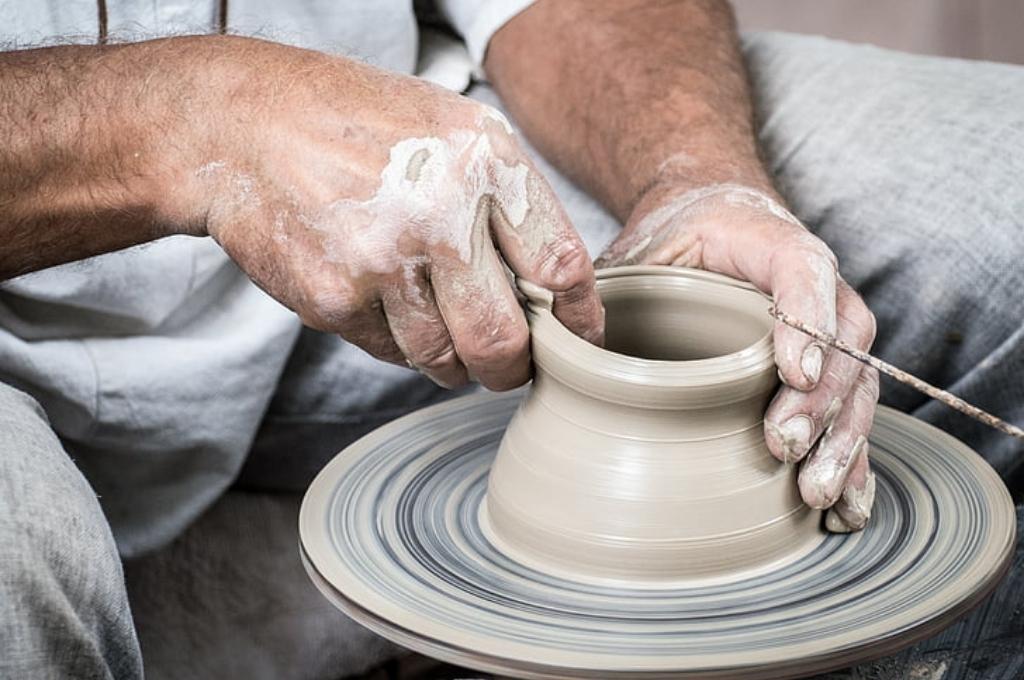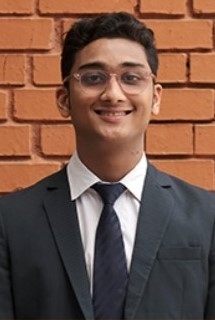Family philanthropy has long played an integral role in India’s culture of giving and continues to address urgent community needs. According to the India Philanthropy Report 2024, the increase in private philanthropy in 2023 was partly driven by the rise in family philanthropy in the country, which is projected to grow at an annual rate of 16 percent until 2028.
While family philanthropy is on the rise, the nature of giving is also evolving. More and more families are going beyond conventional practices, wherein one-off acts of charity are being replaced by a more holistic approach to philanthropy that focuses on strategic and thoughtful giving.
Our family’s journey reflects this shift. When our forefathers began their charitable efforts in 1929, their actions were motivated by a simple desire to address the urgent needs and gaps they observed in healthcare, education, and community support in the city of Pune. For example, in response to a lack of healthcare services, my great grandfather established the Tarachand Charitable Hospital (formerly known as Sheth Tarachand Ramnath Charitable Ayurvedic Hospital) in Pune. Similarly, recognising the influx of students arriving in the city, he established hostels to provide them with safe and affordable accommodation.

Over time, several family members felt a growing desire to create a broader and more meaningful legacy, inspiring the family to expand its efforts. In 2007, recognising the need to do more and address challenges more holistically, my grandfather took a pivotal step by formally establishing the Tarachand Ramnath Seva Trust. This marked the beginning of our transition from charity to philanthropy, with a focus on driving long-term impact.
Here’s a look at some of the changes that were essential to make this strategic shift:
1. Shifting from a reactive to proactive approach
Ninety years ago, our approach to giving wasn’t strategic or meticulously planned. Each year, we’d assess the social problems at hand, figure out the available budget—which wasn’t fixed—and spread the word through our networks, inviting organisations to apply. Applicants would come forward, and the family would allocate grants based on the project’s needs, making decisions such as, “This project needs INR ‘x’ lakh; that one needs INR ‘y’ lakh.” Most of these grants were aimed at building infrastructure or providing the physical foundations necessary for these projects to thrive. If our grant was not enough, we would call upon friends and peers for additional support, but without offering any funding guarantees to the organisation or the cause.
The same approach continued even after the Trust was set up in 2007. Traditional beliefs and a charitable thought process guided us, and we continued to invest in creating infrastructure and give one-time grants.
But, as my sisters and I became involved in the Trust’s operations, we began to question whether we were truly doing enough. Were we merely treating symptoms rather than addressing root causes? How could we create lasting change instead of offering temporary relief? And were there better ways to empower individuals and communities to sustain themselves?

This line of questioning and introspection led to a pivotal moment in 2017 when the family decided to commit a larger corpus of INR 51 crore. With these resources, we were able to adopt a more strategic approach to our giving, moving away from band-aid solutions towards prevention and empowerment. Our focus shifted from asking, “How can we help a community, individual, or family in need?” to “How can we prevent them from needing help in the first place?”
This transition led us to rethink our mission and build a foundation for long-term change. As a philanthropic organisation, we set a new goal: to make a meaningful difference by supporting research, creating targeted interventions, and backing innovative ideas. This approach now guides how we design our interventions and the way we implement them.

2. Collaborating with the right partners
To approach philanthropy effectively, we recognised the importance of building a solid foundation of expertise and insights. So, we decided to find partners who could bring the knowledge and guidance needed to take a more strategic approach.
The first collaboration was with Darshan Mundada and his team at TBL Consultancy Services, a professional consultancy that helped us shape our strategy, ensure compliance, support implementation, and build the necessary capacity for our philanthropic work. Their expertise provided crucial guidance in developing a structured approach, equipping us with the tools and knowledge required to pursue our goals effectively.
Additionally, in our first year, our leadership attended conferences and networking events and connected with several experts deeply embedded in the sector. This direct engagement was crucial—it allowed us to, interact and co-create our journey alongside those with valuable experience. For instance, when we launched the AtmaNirbhar Grant—our capacity-building programme for grassroots nonprofits—in 2022, we partnered with Atma, a nonprofit dedicated to enhancing the knowledge, skills, systems, processes, networks, agency, and resource access of other nonprofits. For us, TBL’s insights, along with Atma’s involvement, were integral to shaping the programme. The two organisations led the identification of region-specific needs, particularly in Pune, and provided the essential expertise to adapt our programme effectively.
Similarly, at the organisational level, ongoing internal discussions and exchanges with other philanthropists and funders in our network guided the development of our programmes and operational theory. This network of expertise helped us in several ways:
a. Conducting a thorough needs assessment
In 2018, we engaged TBL to help define our focus areas. We wanted to ensure that any programme we initiated would strategically target the root causes of the issues rather than offering surface-level solutions.
In the early stages of this process, TBL brought together the entire family to identify each member’s personal motivations and triggers for giving. Through these discussions, we zeroed in on one theme that everyone in the family felt deeply about: preventing addiction. Initially, we considered de-addiction efforts and our consulting partners conducted a landscape study, examining current efforts across the country. Their findings revealed a significant gap in the field of addiction prevention, where efforts were largely limited to awareness campaigns. Recognising this gap, TBL consulted psychologists and other experts to gain deeper insights, ultimately identifying an opportunity to establish addiction prevention as a dedicated field. This led to the Trust launching its first flagship programme in 2018—Self-Awareness In Youth for Anti-addiction Motive, or Saiyam—in partnership with Jnana Prabodhini’s Institute of Psychology. Since Saiyam’s inception, we have worked with approximately 40,000 children in Pune. Our goal is to build awareness and deliver evidence-based preventative education that fosters behavioural change.
b. Developing long-term strategies
To ensure that the Trust remains focused on sustainable solutions rather than short-term relief, we established a core advisory board for our philanthropy, in addition to specialised advisors for each programme. These subject-matter experts assist us in refining our initiatives and guide us in setting clear end goals—essentially defining what an exit strategy for the Trust might look like over the next 10–15 years.
For example, in the case of Saiyam, the exit strategy might involve achieving a policy change to integrate addiction awareness into school curricula. With this objective in mind, and informed by a thorough needs assessment, market analysis, and expert insights, we’ve mapped out a timeline for the programme. This includes a reverse roadmap, which outlines key projects and milestones to help us meet our long-term impact goals.
c. Implementing effective monitoring and evaluation (M&E) systems
At the Trust, we have adopted a rigorous M&E process for all our programmes. This process comprises two key components: a scientific approach to M&E, where a third party or an implementation body assesses the programme, and an internal framework developed at the programme’s outset. We prioritised the internal framework initially, because our shift towards philanthropy required us to address challenges that we hadn’t faced before. Our focus was on establishing proof of concept before scaling the programme and evaluating its broader impact.
For our flagship initiative, Saiyam, we commissioned a third-party study to assess the status of addiction in Pune, which served as a baseline for the impact study. This framework is regularly reviewed and adapted in quarterly meetings with our partners. For Saiyam, TBL implements a specific M&E framework, while Atma manages the framework for the AtmaNirbhar Grant. Similarly, Mahesh Safety Net has its own tailored M&E framework, implemented by TBL.
To further enhance the Trust’s accountability, we introduced third-party assessments of all our operations last year. These external evaluations assess the maturity stage of each programme, providing us with valuable insights to refine and strengthen our approach over time.
3. Creating a network of donors
Strategic philanthropy also emphasises the importance of collaboration and partnership. At the Trust, we’ve always believed that our impact is amplified when we work together with like-minded organisations, government agencies, and community stakeholders. By pooling resources, sharing expertise, and aligning our efforts, we can tackle complex challenges more effectively and achieve greater collective impact.
However, this represented a significant shift for the family. Traditionally, in a Marwadi business family, charity or philanthropy is approached with a sense of silence and spirituality; to give without seeking recognition is viewed as a duty. Changing this mindset meant embracing the idea that our duty now includes inspiring our peers to give, which requires sharing our stories and experiences.
4. Moving away from the business mindset
For a family embedded in the business world, understanding the nuances of philanthropy and social impact was a learning curve as well. In business, interactions are often grounded in clear, measurable outcomes—such as profit. The social impact space, however, is more complex. Stakeholders are motivated by diverse intentions, including a genuine desire to create positive change. Achieving impact requires much more than simply working towards a bottom line; it demands a high level of emotional intelligence and adaptability when collaborating with a group of passionate individuals.
For us, coming to the realisation that we were no longer working with people solely motivated by salary was the biggest struggle. At the same time, we also realised that the Trust could not just operate on a set of ideals alone but needed to ensure that everyone—from staff to partners—shared a common set of values that guided their work.
Additionally, we needed to understand the tenets of patience and become comfortable with intangibility. Social impact takes time, and the delayed gratification that accompanies it can sometimes be frustrating, but it is also incredibly rewarding. In traditional charity, the results are tangible—donating INR 2 crore might result in the construction of a visible building. In contrast, when we invest INR 1 crore annually in anti-addiction initiatives, the results might not be immediately visible. This requires a significant mindset shift for donors. It’s about more than just writing checks.
While the Trust’s journey from charity to philanthropy has been complex and multifaceted, it has been transformative for all of us. Looking to the future, the importance of strategic philanthropy is becoming increasingly clear. With our corpus nearly double of what it was when we started, we can continue to leverage our resources, expertise, and partnerships to address challenges more effectively and create sustainable solutions that will benefit generations to come.
—
Know more
- Read this article about moving from charitable giving to social justice.
- Read this report about India’s philanthropy landscape in 2024.
- Read this article about why philanthropy must not take on the strategies of for-profit organisations.




